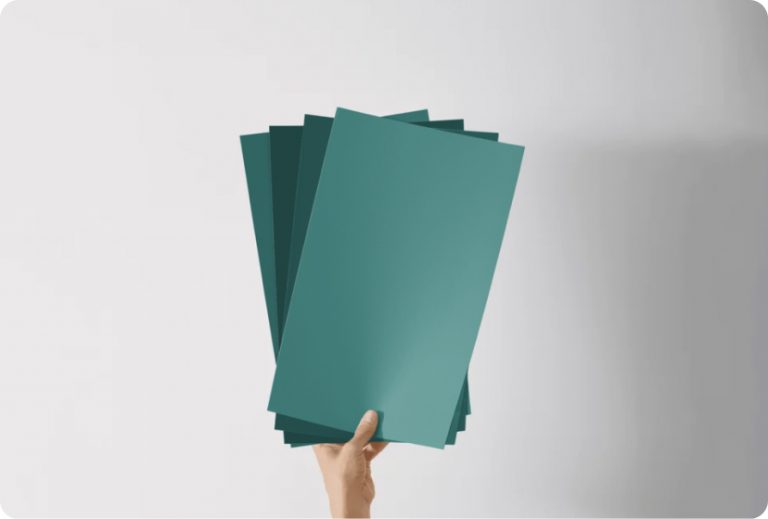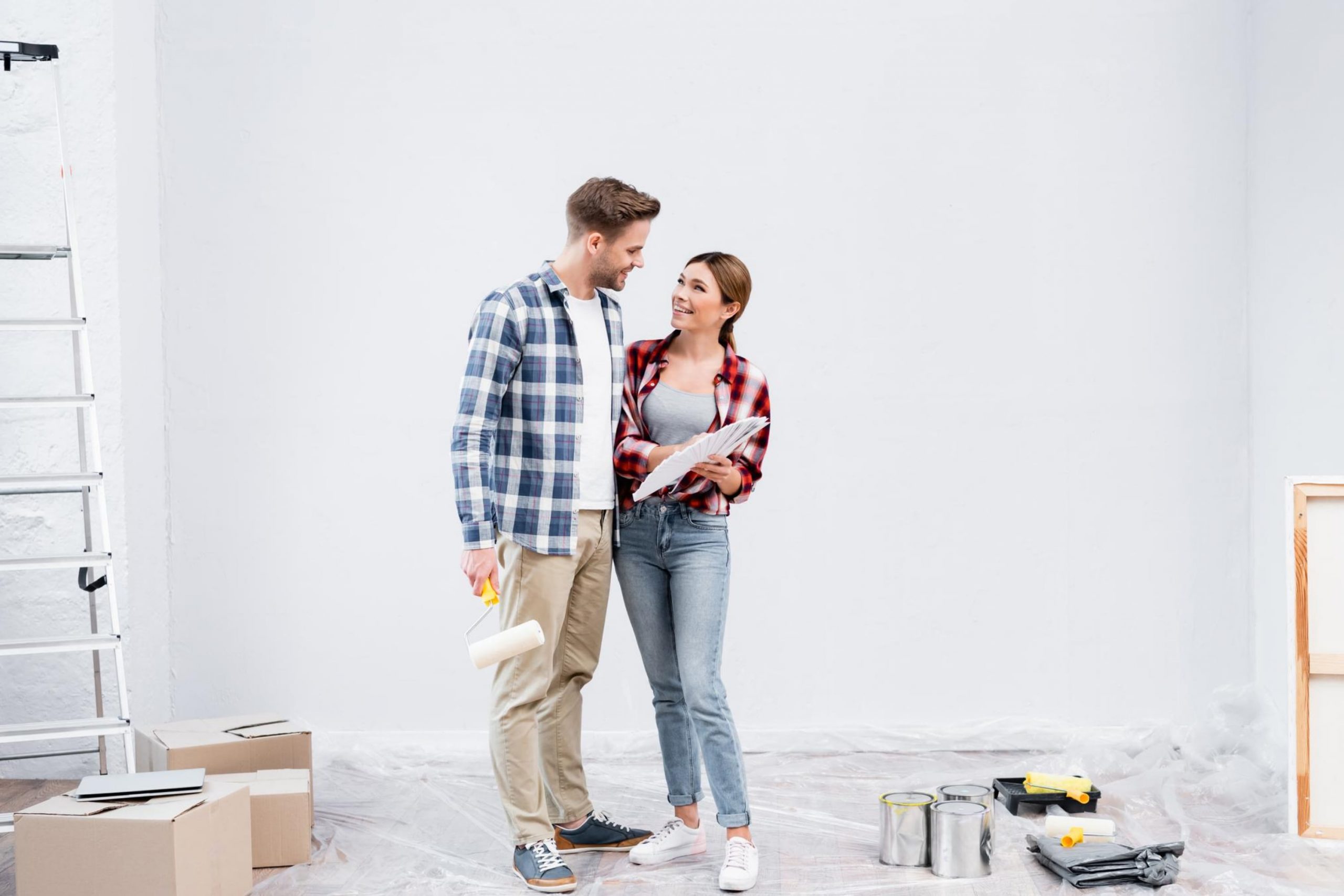Imagine walking into a room and being instantly soothed by its colors. That’s the effect Benjamin Moore’s 1678 Blue Nose has. As you look at this paint, it’s like a breath of fresh air that calms and refreshes the spirit. Its subtle blend between blue and gray creates a peaceful atmosphere that’s perfect for areas where you want peace and quiet, like a bedroom or a reading nook.
I first used this color in my own home’s study. The goal was to create an area where I could feel calm and focused, and Blue Nose delivered just that. Surprisingly adaptable, it pairs beautifully with soft whites or bold furniture choices.
Whether you’re reimagining a single room or redoing your entire home, consider how this hue could enhance your living areas.
Isn’t it wonderful how a simple coat of paint can refresh your surroundings?
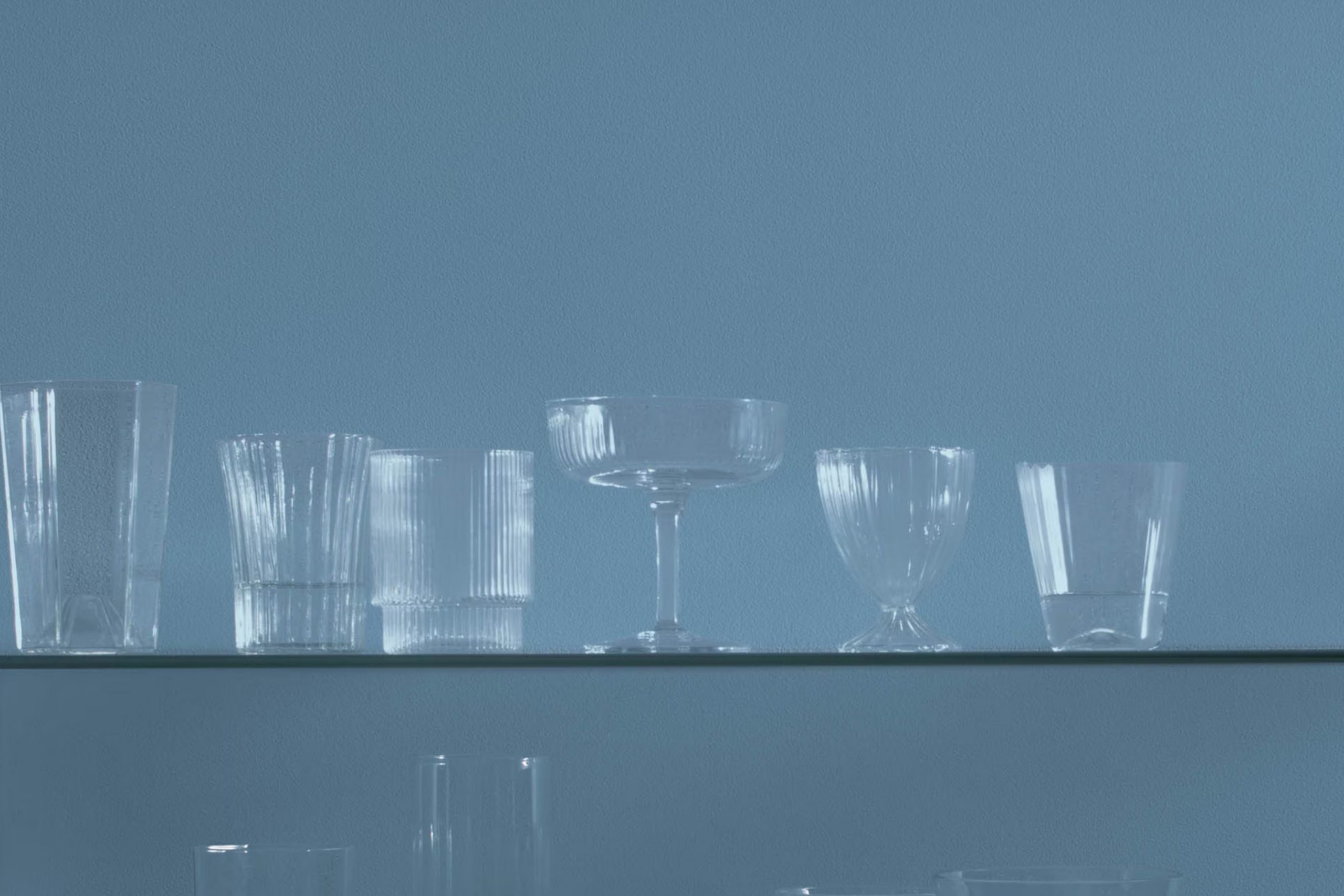
What Color Is Blue Nose 1678 by Benjamin Moore?
Blue Nose by Benjamin Moore is a unique shade that effortlessly combines elements of both blue and gray, creating a calming and flexible backdrop for any room. This color has a soothing effect, lending itself well to creating a restful environment. It’s a perfect choice for those who prefer a subtle yet distinctive color that isn’t too overpowering.
Blue Nose works exceptionally well in modern and minimalist interior styles. Its cool undertones complement these clean, sleek designs, bringing a sense of balance and freshness to the area. Moreover, it’s an excellent option for coastal styles, where its oceanic hints can create a light, airy feel reminiscent of a beachside retreat.
In terms of materials, Blue Nose pairs beautifully with natural wood, adding warmth to its coolness and creating an inviting area. It also goes well with metals like brushed silver or stainless steel, providing a more contemporary vibe.
Texturally, it complements soft, plush fabrics like wool or linen, which help to soften its crispness, making any interior feel more cozy and comfortable. Overall, Blue Nose is a fantastic color choice for anyone looking to inject a peaceful yet stylish hue into their home. Its ability to harmonize with various materials and styles makes it highly adaptable for various decorating ventures.
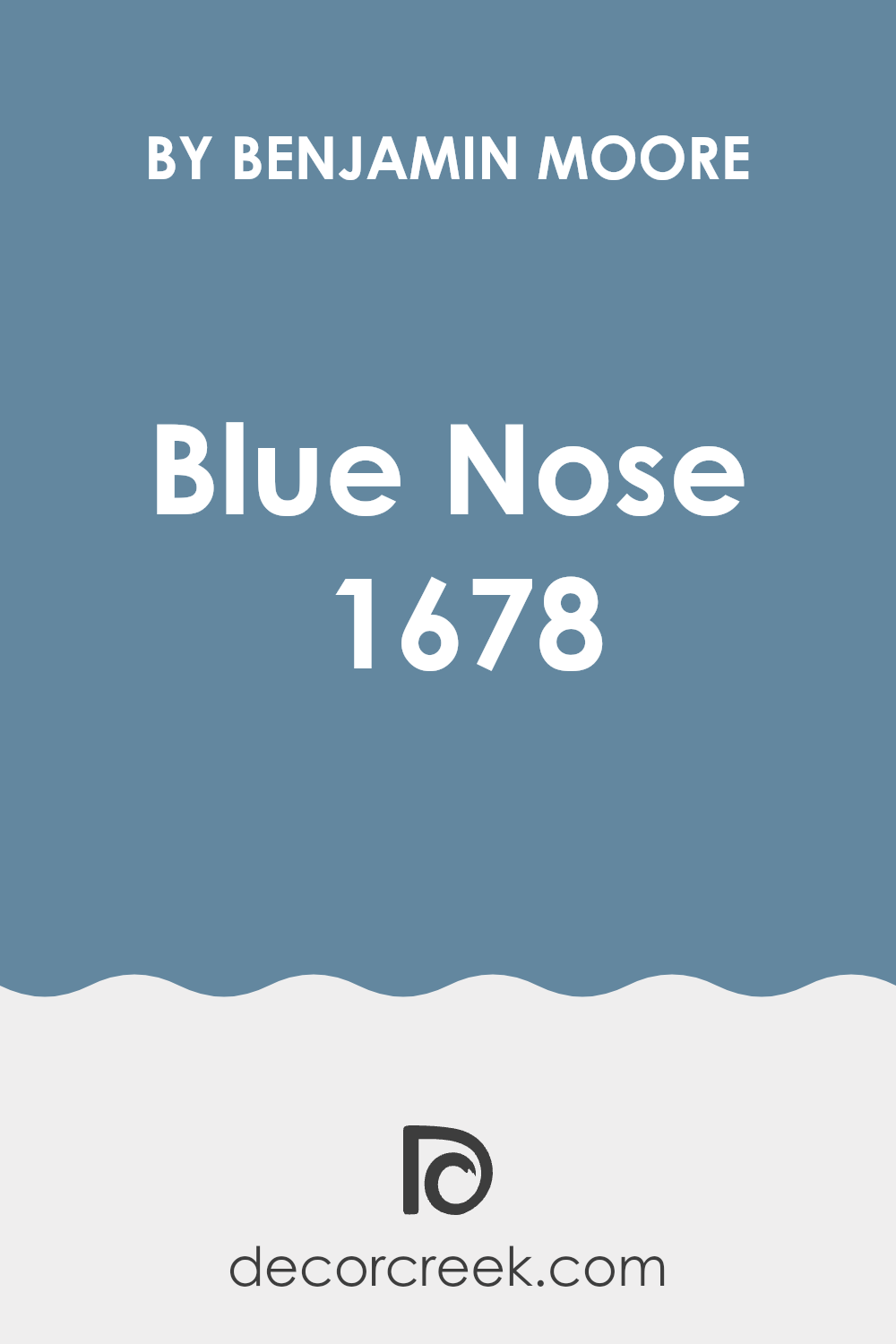
Is Blue Nose 1678 by Benjamin Moore Warm or Cool color?
Blue Nose 1678 by Benjamin Moore is a flexible and appealing paint color that fits beautifully in various rooms of a home. This color is a soft, muted blue-gray shade that lends a subtle, calming effect to areas.
It is ideal for those who want to add a touch of color to their room without overpowering the senses. Because of its balanced hue, it works well in both bright and dimly lit areas, adapting to the natural light to either soften or enrich its blue tones. Blue Nose 1678 is especially effective in bedrooms or living rooms where a gentle, peaceful atmosphere is desired.
It pairs well with white trim and hardwood floors, creating a fresh and modern look. Additionally, it’s an excellent choice for bathrooms, providing a clean, airy feel that complements white fixtures and natural wood accents. This color is a practical choice for anyone looking to refresh their home with a stylish yet understated look.
Undertones of Blue Nose 1678 by Benjamin Moore
Blue Nose 1678 by Benjamin Moore is a dynamic paint color that can greatly influence the ambiance of a room due to its complex undertones. Undertones are subtle colors that lurk beneath the surface of the primary paint color, affecting how it looks in different lighting conditions and alongside various decor elements.
The undertones of Blue Nose include a spectrum ranging from cooler tones like lilac, dark turquoise, and mint, to warmer shades like pale pink and olive. Each of these influences the perception of the paint in subtle but significant ways.
For instance, lilac and light blue undertones can impart a gently soothing effect, making the color feel softer and more inviting. In contrast, darker undertones like navy or dark green can give the color more depth, making it stand out more prominently on walls.
When used on interior walls, the effect of these undertones becomes especially noticeable. In natural light, the cooler undertones like blue and mint may become more pronounced, creating a refreshing and calm aesthetic. In artificial lighting, warmer undertones like pink and olive might be highlighted, adding warmth to the room.
The combination of these undertones makes Blue Nose 1678 a flexible choice for interior design, capable of complementing a range of styles and palettes. Whether aiming for a bright, airy feel or a more grounded, cozy ambiance, this color can adapt to enhance the mood one is trying to achieve in their area. This adaptability, driven by its rich blend of undertones, allows it to work harmoniously with different textures and colors in home decor.
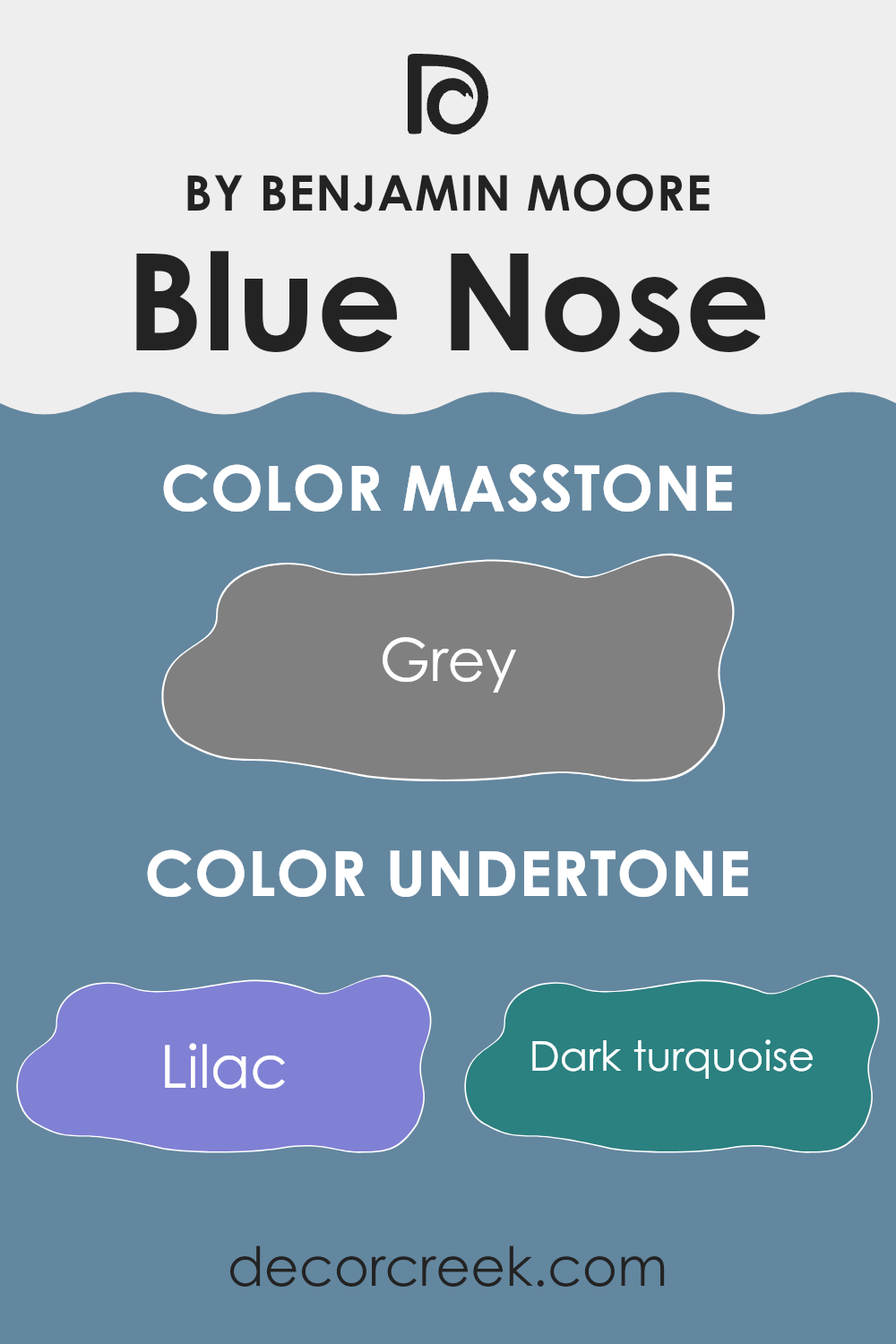
What is the Masstone of the Blue Nose 1678 by Benjamin Moore?
Blue Nose 1678 by Benjamin Moore has a masstone that is gray, specifically Grey (#808080). This neutral shade is incredibly adaptable and can work well in various parts of a home. In living rooms and bedrooms, the gray masstone creates a calm and relaxed atmosphere, making it ideal for areas where you want to unwind.
Its neutral characteristic means it can easily pair with other colors – whether you’re aiming for a subtle look with other neutrals or want to mix it with bolder hues for contrast. In smaller areas like bathrooms or hallways, using this color can help make the room feel more open.
Additionally, its classic appeal ensures that it won’t go out of style quickly, making it a practical choice for those looking to refresh their walls without frequent updates. Overall, its adaptability and enduring look make it a solid choice for adding a stylish touch to any home.
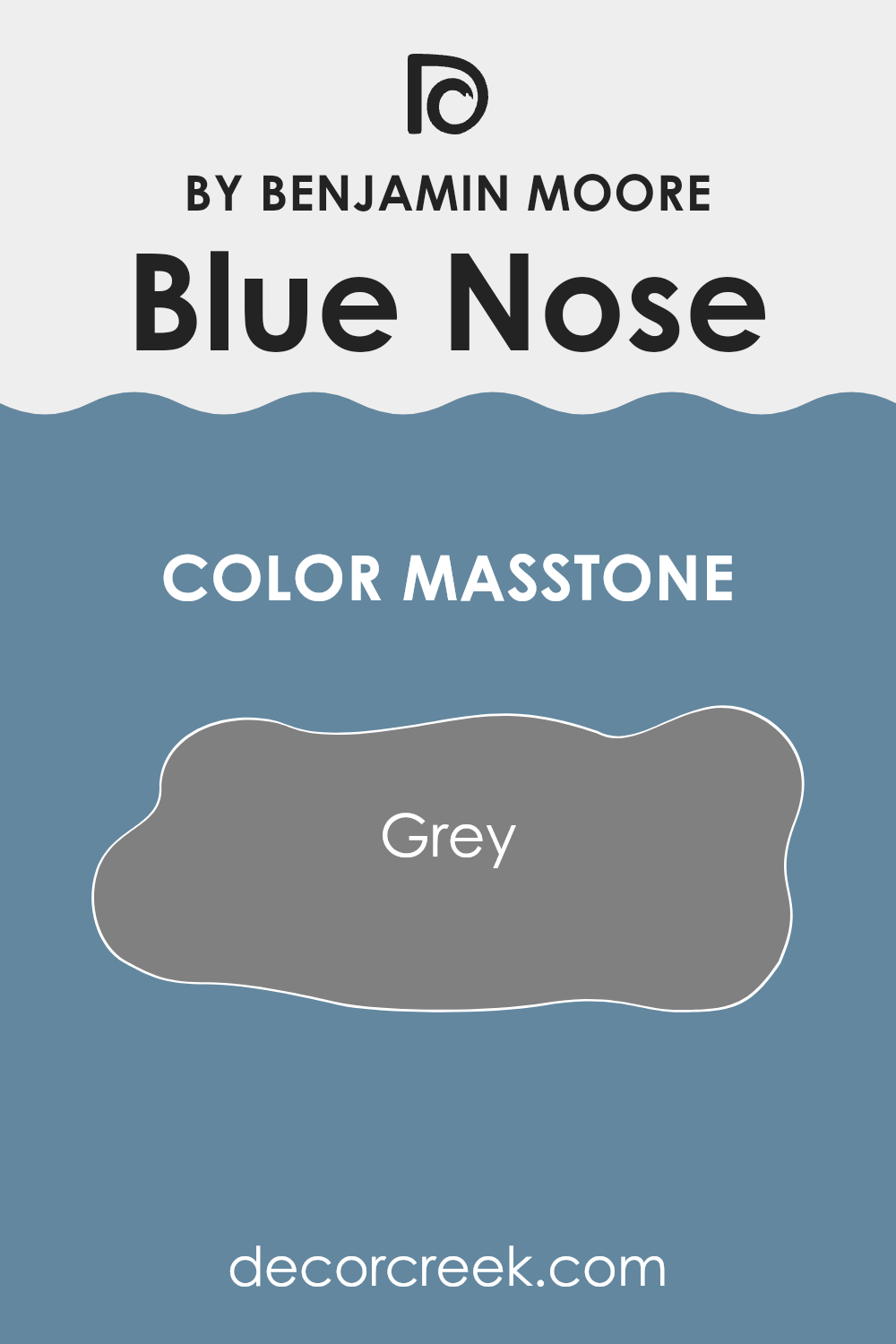
How Does Lighting Affect Blue Nose 1678 by Benjamin Moore?
Lighting has a significant impact on how we perceive colors. Different types of light can change how a color looks in a room. The Blue Nose color by Benjamin Moore is a perfect example to examine under various lighting conditions, as its appearance can shift based on the light source.
Artificial Light: In artificial lighting, the Blue Nose color tends to appear richer and more vibrant. This is because certain types of artificial lights, especially warm incandescent bulbs, can enhance the depth of the blue, making it appear more vivid and pronounced.
Natural Light: Under natural light, Blue Nose displays its true color but varies depending on the time of day. During midday when the sun is brightest, the blue will look lighter and more airy. Towards the evening, as natural light dims, the color can seem deeper and more muted.
Different room orientations will also affect how Blue Nose looks:
North-Faced Rooms: In rooms facing north, light tends to be cooler and more constant throughout the day. Here, Blue Nose might appear slightly more muted and subtle, often giving a calm and consistent look without too many shifts during the day.
South-Faced Rooms: South-facing rooms receive more intense and warm light, especially in the middle of the day. This type of light can make Blue Nose look brighter and more dynamic. The warmth can draw out the color’s vibrancy, making it a lively choice for energetic areas.
East-Faced Rooms: With morning light, east-facing rooms get a soft, warm glow that can make Blue Nose look soft and inviting in the morning, turning to a true, balanced blue as the day progresses and light becomes more neutral.
West-Faced Rooms: In west-facing rooms, the evening light is dominant, which can make Blue Nose appear richer and darker. This provides a relaxing and cozy atmosphere by the end of the day, as the color absorbs the reddish hues of the sunset.
Overall, the Blue Nose color by Benjamin Moore adapts uniquely to different lighting conditions, making it an adaptable choice for various settings and moods depending on the room’s orientation and light exposure.
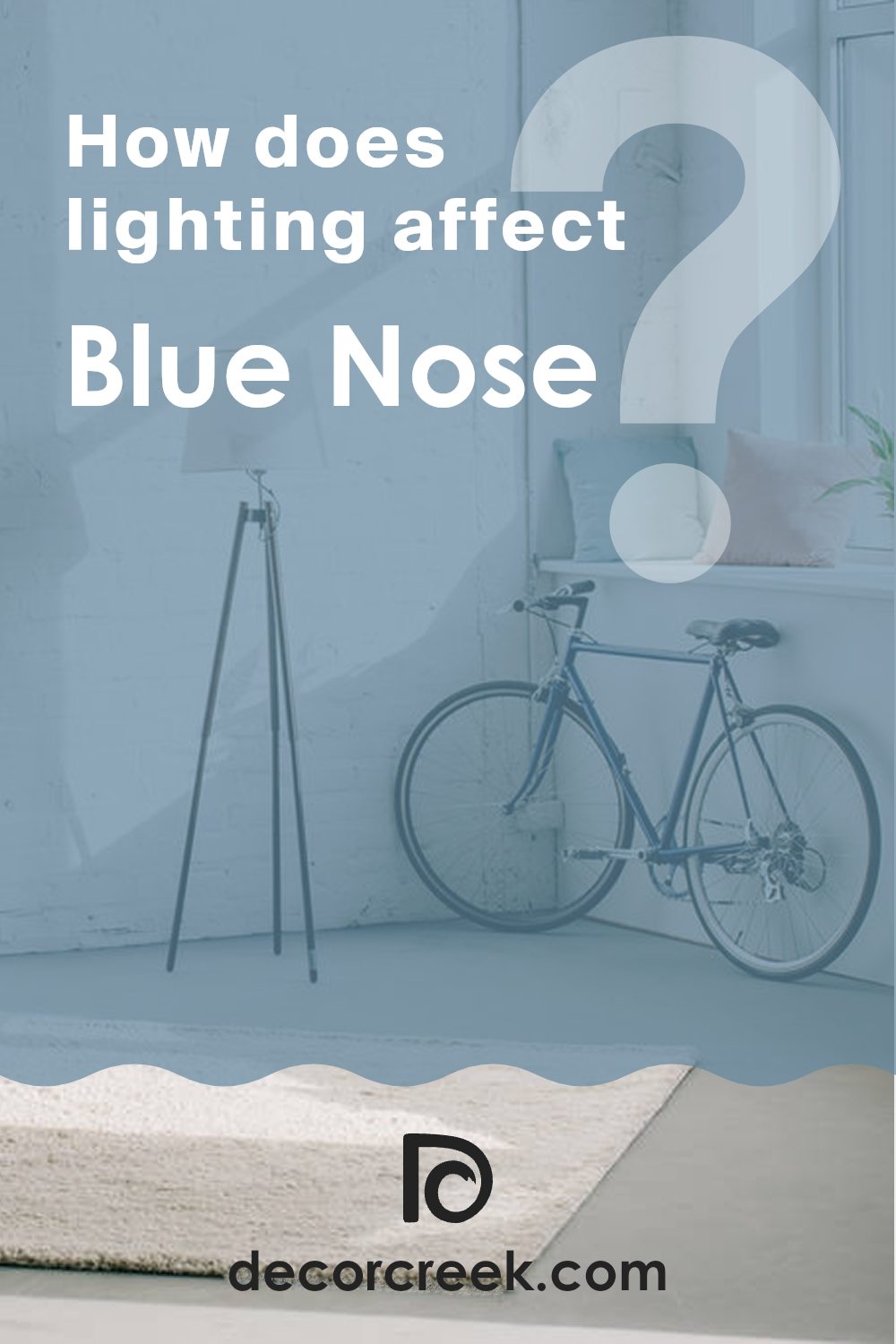
What is the LRV of Blue Nose 1678 by Benjamin Moore?
LRV stands for Light Reflectance Value, a measure used to describe the percentage of light a paint color reflects from or absorbs into a painted surface. Think of it this way: if a color has a higher LRV, it reflects more light, making the room it is in seem brighter and larger.
Conversely, a lower LRV means the color absorbs more light, which can make an area appear cozier but smaller and darker. LRV is especially important to consider when choosing paint for your area because it can greatly impact the atmosphere and visual comfort of the room.
The LRV of the paint color Blue Nose by Benjamin Moore is 23.79. This is a fairly low value, which means it reflects less light back into the room. This absorption of light creates a richer, deeper color on the walls, making it ideal for areas where a more intimate and enclosed feeling is desired.
In rooms without a lot of natural light, this color might make the area feel quite dark, so it’s best used in places with adequate lighting or combined with lighter colors to balance the darkness. It’s a good choice for creating a cozy atmosphere, such as in bedrooms or reading nooks.
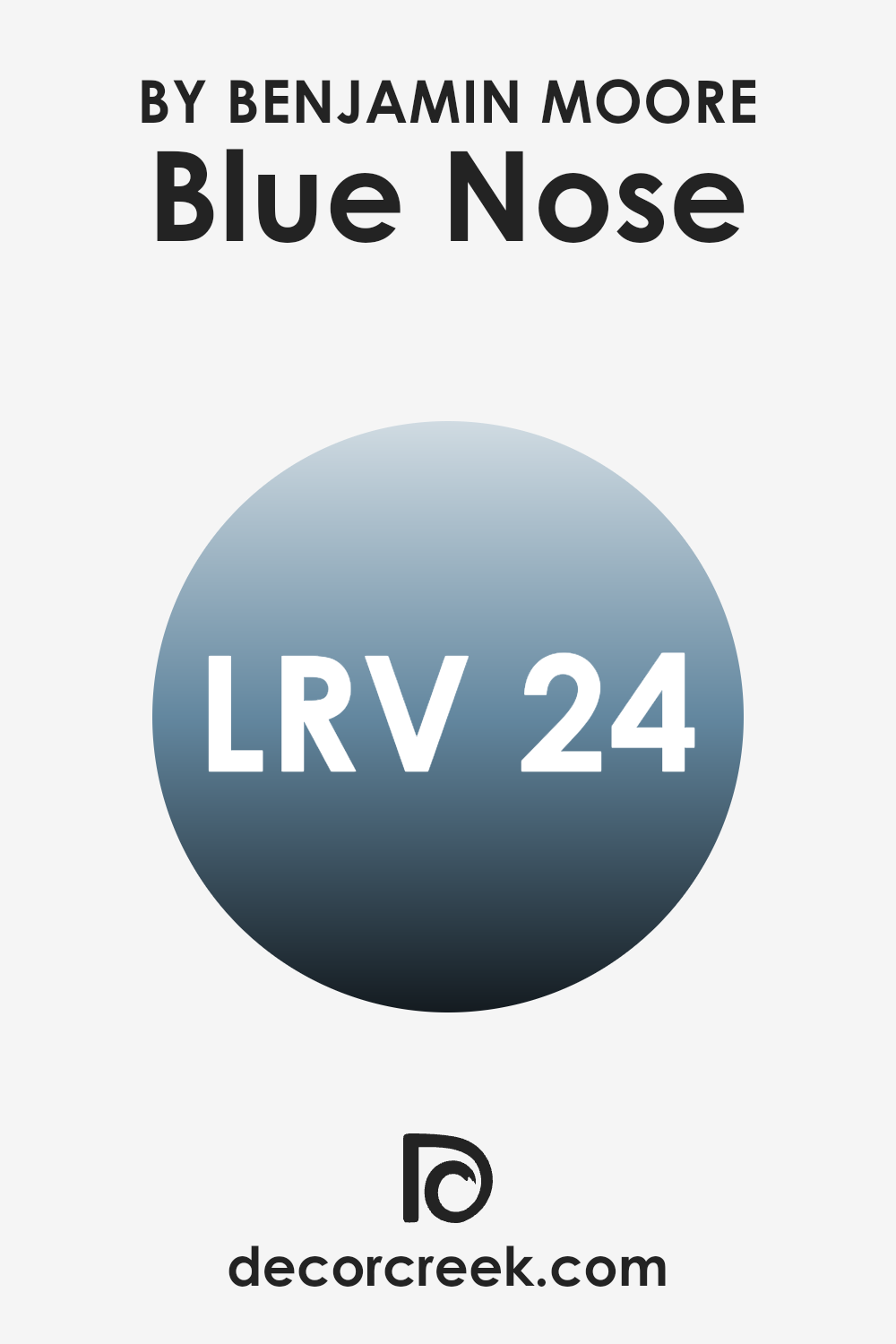
Coordinating Colors of Blue Nose 1678 by Benjamin Moore
Coordinating colors are those that complement and enhance the look of a primary color, in this case, Blue Nose by Benjamin Moore. These colors are selected to create a harmonious and aesthetically pleasing color scheme in a room or on a building’s exterior. By pairing Blue Nose with the right coordinating colors, designers can achieve a balanced and appealing look. Coordinating colors should not only look good together but also help in bringing out the best qualities of the main color.
Among the coordinating colors for Blue Nose, Corn Stalk 542 is a warm, creamy yellow that brightens up areas and gives a welcoming feel. It’s ideal for adding a cheerful splash to balance the cool tones of Blue Nose.
French Press AF-170, on the other hand, is a rich, deep brown that provides a grounded, earthy contrast to the lighter Blue Nose, making it great for creating a cozy and inviting atmosphere. Sebring White OC-137 is a clean and refreshing white that offers a crisp contrast, perfect for trim or as an accent wall to make Blue Nose pop. Lastly, Wind’s Breath OC-24 is a gentle off-white with subtle undertones that harmonize beautifully with Blue Nose, supporting it without overpowering, suitable for a polished yet understated backdrop.
You can see recommended paint colors below:
- 542 Corn Stalk
- AF-170 French Press
- OC-137 Sebring White
- OC-24 Wind’s Breath
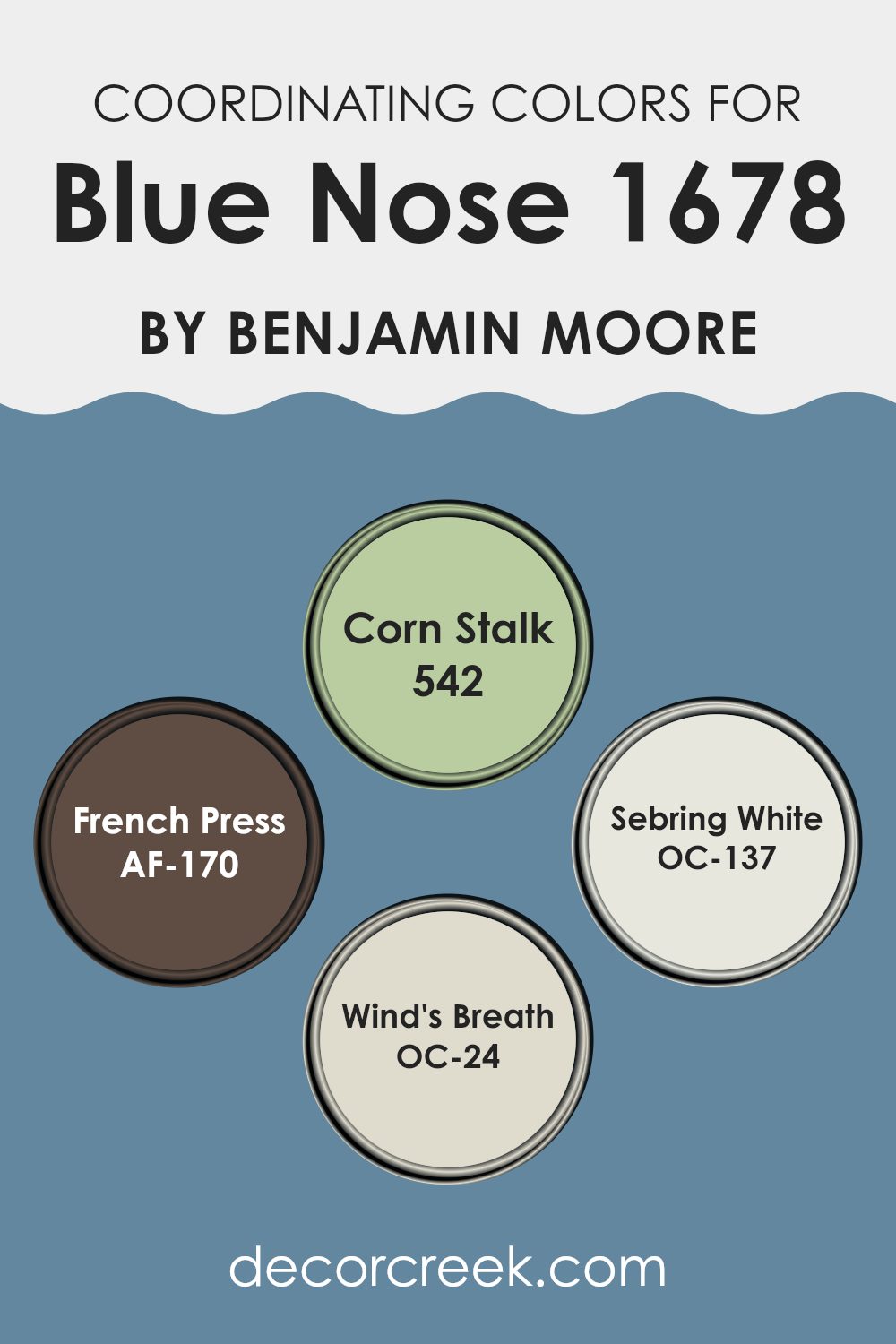
What are the Trim colors of Blue Nose 1678 by Benjamin Moore?
Trim colors are specific shades used to accentuate or highlight architectural details and edges such as door frames, window sills, and baseboards in a room. Choosing the right trim color can enhance the overall aesthetic of an area and create a clean, finished look. The trim color acts as a frame for different sections of a room, helping to define the setting and complement the wall colors. A well-chosen trim color can make wall colors stand out more vividly and add a touch of crispness to the décor.
Regarding Blue Nose by Benjamin Moore, a soft and inviting shade, pairing it with trim colors like OC-54 – White Wisp or OC-152 – Super White can be quite effective. White Wisp is a gentle off-white with a hint of gray, offering a subtle contrast, softening the transition between the wall color and trim.
On the other hand, Super White is a bright and clean white, providing a sharper contrast that can make the blue tones of Blue Nose really pop, giving the room a fresh and lively feel. These trim colors support the overall visual harmony of an area by framing the walls in a way that complements the main color theme without stealing the spotlight.
You can see recommended paint colors below:
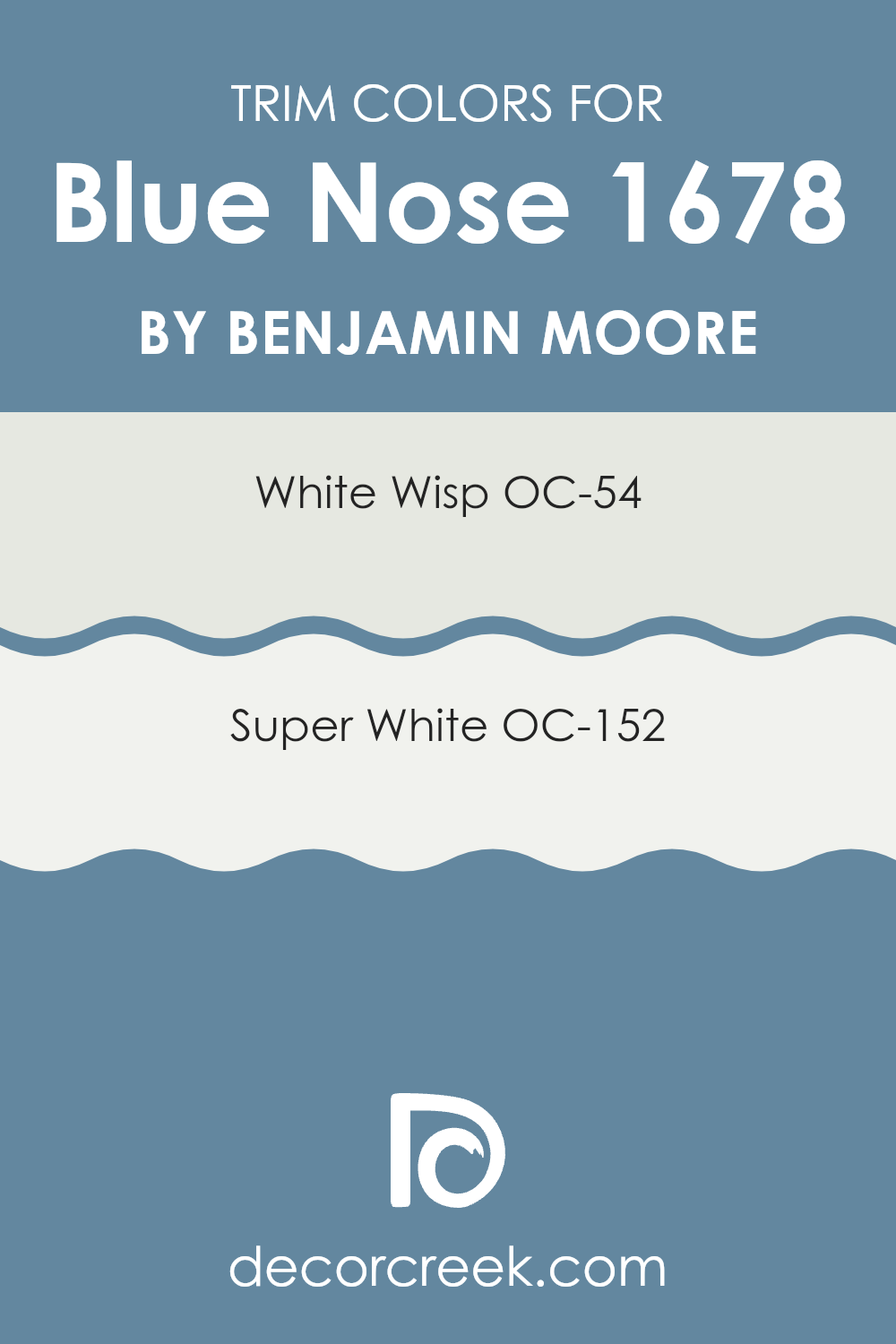
Colors Similar to Blue Nose 1678 by Benjamin Moore
When decorating, integrating similar colors can create a harmonious and cohesive visual experience. Similar colors, like variations of blue inspired by Blue Nose by Benjamin Moore, have the ability to seamlessly blend with each other while enhancing the overall aesthetic of an area.
For example, by incorporating shades like Alfresco, Old Blue Jeans, Blue Daisy, and Lakeside Cabin, a designer can achieve a layered, soothing appearance without overpowering the senses. These colors have subtle differences that complement each other, making the environment more welcoming and visually pleasant.
Alfresco is a light, almost ethereal blue that adds a soft touch to the surroundings, making it perfect for creating a relaxed atmosphere. Old Blue Jeans has a more grounded, familiar feel to it, reminiscent of well-worn denim, which brings comfort and casualness to any room.
Blue Daisy, on the other hand, is a vibrant blue with a hint of periwinkle, ideal for injecting a dash of cheerfulness into areas. Lastly, Lakeside Cabin offers a deeper, richer blue tone that recalls the natural beauty of a lake at dusk, perfect for adding a bit of depth and interest to a setting. These shades work well together, building off each other’s strengths to beautify any home or office environment.
You can see recommended paint colors below:
- 1672 Alfresco
- 839 Old Blue Jeans
- 2062-40 Blue Daisy
- 1658 Lakeside Cabin
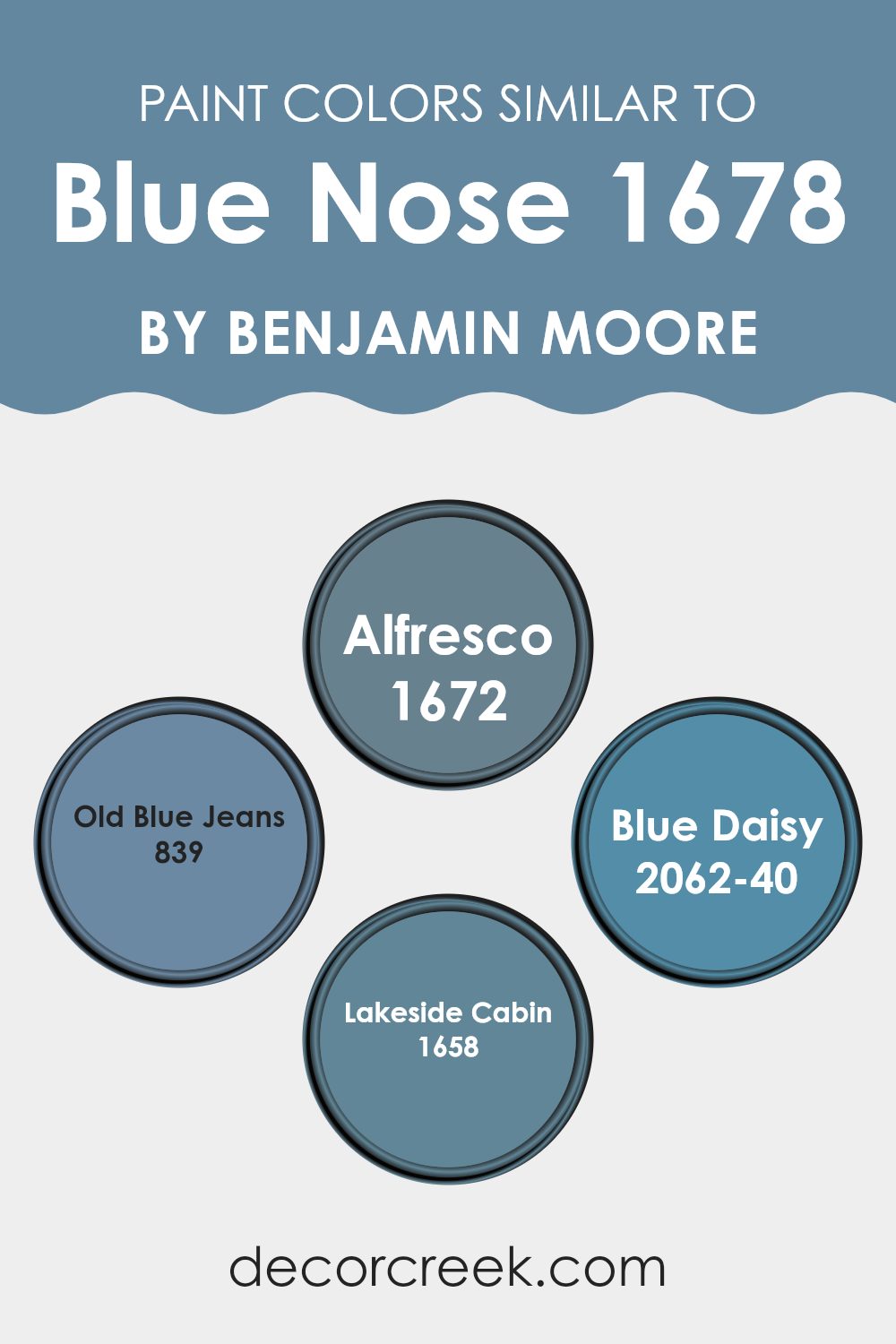
Colors that Go With Blue Nose 1678 by Benjamin Moore
Choosing colors that pair well with Blue Nose 1678 by Benjamin Moore is crucial for achieving a harmonious look in any area. When colors complement each other, they create a visually appealing environment that feels cohesive and balanced. For example, Colonial Blue 1677 is slightly darker than Blue Nose, offering a subtle contrast that enhances the depth of the room. Hudson Bay 1680, with its rich, navy-like tone, offers a more striking contrast, which can be used to create focal points or accentuate certain features.
Polar Sky 1674 provides a lighter, airier feel, introducing a refreshing contrast when used alongside the deeper Blue Nose. This pairing is perfect for areas aiming for a brighter ambiance. Northern Air 1676 has a crisp quality that echoes the freshness of an open sky, making it ideal for bringing a sense of openness into smaller or darker rooms.
Under the Big Top 1675 adds a unique twist with its slightly red undertone, offering warmth to the cooler blue of Blue Nose, ideal for settings needing a cozy yet distinctive look. Lastly, Bedford Blue 1679, being very close to Blue Nose in tone, helps in creating a seamless visual flow, perfect for a subtle and harmonious aesthetic. Together, these colors enhance the beauty of Blue Nose by providing a variety of options that satisfy different design needs and preferences.
You can see recommended paint colors below:
- 1677 Colonial Blue
- 1680 Hudson Bay
- 1674 Polar Sky
- 1676 Northern Air
- 1675 Under the Big Top
- 1679 Bedford Blue
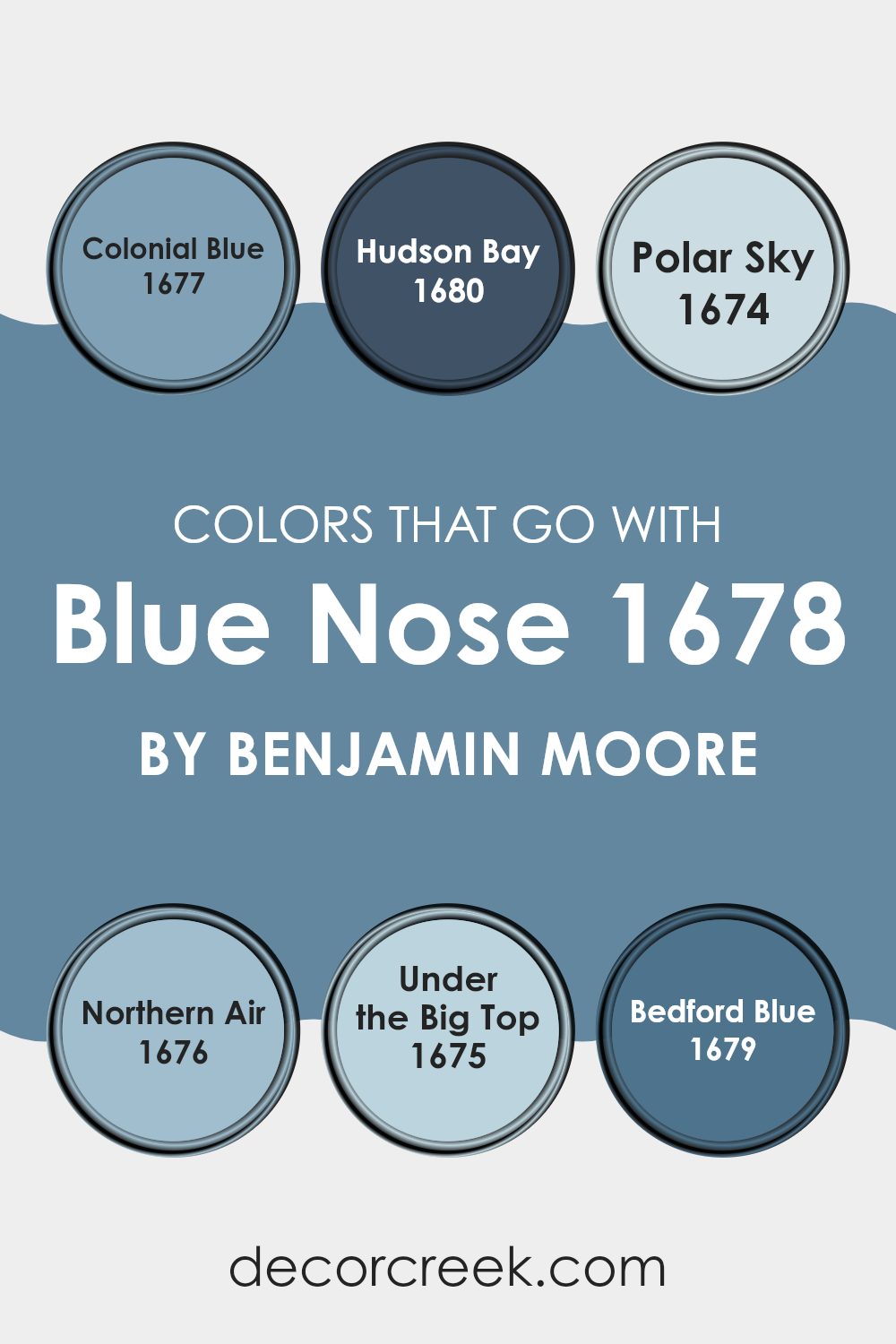
How to Use Blue Nose 1678 by Benjamin Moore In Your Home?
Blue Nose 1678 by Benjamin Moore is a beautiful paint color that can add a fresh look to any home. It’s a subtle gray with hints of blue, making it a perfect choice if you want to add a bit of color without overpowering a room. This shade works well in living rooms, bedrooms, or bathrooms because of its calm and gentle feel.
You can use Blue Nose 1678 to paint all the walls in a room for a cozy, unified look or just on one wall to create a nice accent. It pairs well with white trim or furniture, which can help to brighten the area while allowing the wall color to stand out subtly.
Additionally, this color matches nicely with wood tones and metallic finishes, giving you flexibility in choosing decor items such as picture frames, lamps, and shelves. Whether you’re repainting a whole room or just looking to freshen up a small corner, Blue Nose 1678 is an adaptable option that can fit different rooms and styles in your home.
Blue Nose 1678 by Benjamin Moore vs Blue Daisy 2062-40 by Benjamin Moore
Comparing Blue Nose by Benjamin Moore to Blue Daisy by the same brand, we see notable differences. Blue Nose showcases a deeper, more subdued shade of blue. It’s a color that can make an area feel cozy and well-grounded.
This shade could be great for a bedroom or a study where a calming atmosphere is appreciated. On the other hand, Blue Daisy stands out with its brighter and more vivid blue tone.
This color is playful and energizing, perfect for areas like a kitchen, bathroom, or even a child’s room where a cheerful vibe is desired. It can add a splash of brightness and make a room feel lively and fun. Both colors have their unique appeal and would set very different moods in an area depending on what you’re looking for.
You can see recommended paint color below:
- 2062-40 Blue Daisy
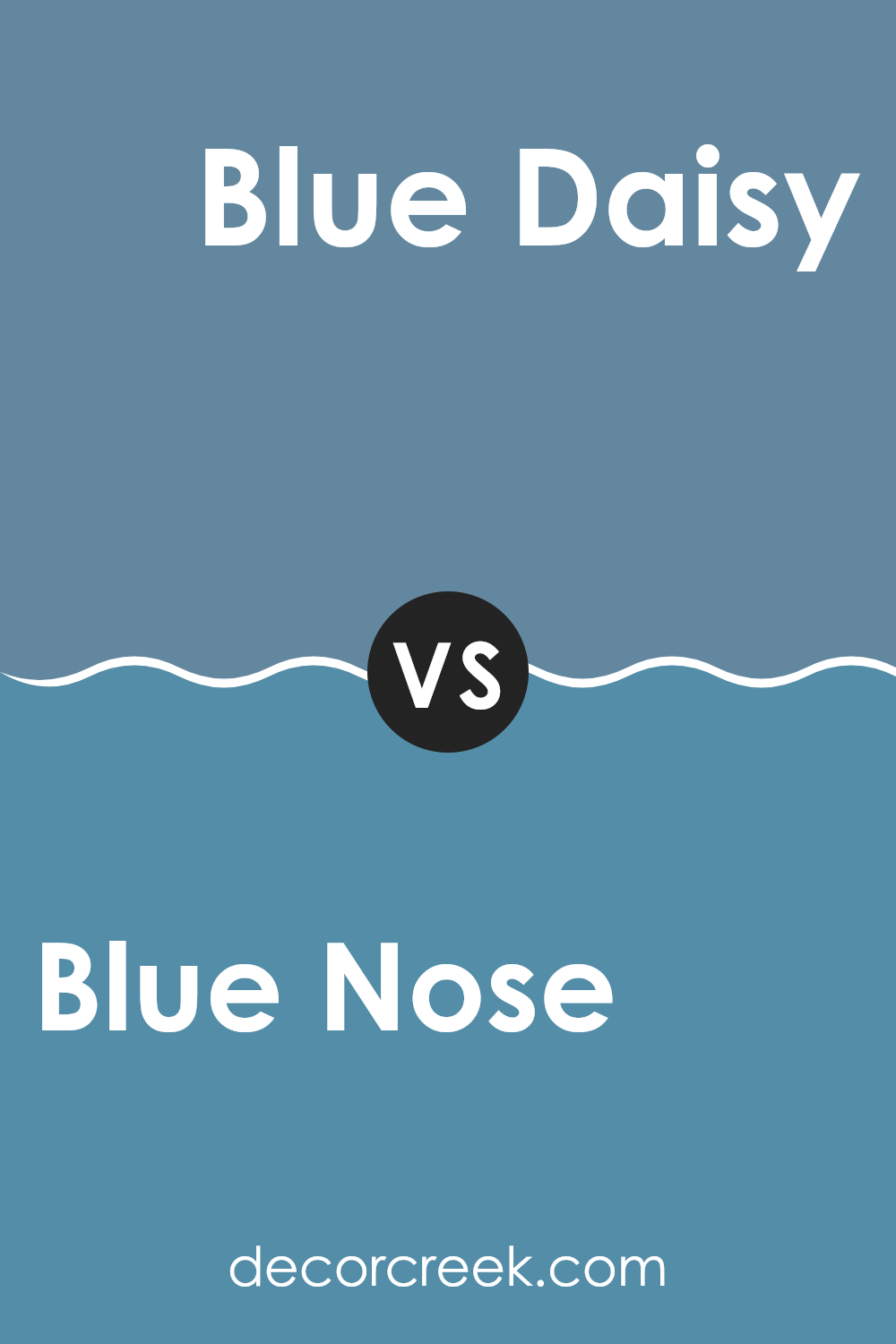
Blue Nose 1678 by Benjamin Moore vs Old Blue Jeans 839 by Benjamin Moore
Blue Nose 1678 and Old Blue Jeans 839 by Benjamin Moore are two distinct shades of blue, each offering a unique aesthetic. Blue Nose 1678 is a rich, deep blue that has a bold presence. It adds a strong character to any area, making it ideal for creating a focal point in a room.
In contrast, Old Blue Jeans 839 is a softer, more muted blue. This color is reminiscent of well-worn denim and has a comfortable and relaxing vibe that is easy on the eyes. It works well in areas where a calm and laid-back atmosphere is desired.
While Blue Nose 1678 makes a statement with its depth, Old Blue Jeans 839 offers a gentle and inviting feel. These qualities make them suitable for different purposes and settings in home décor, depending on the mood you want to achieve.
You can see recommended paint color below:
- 839 Old Blue Jeans
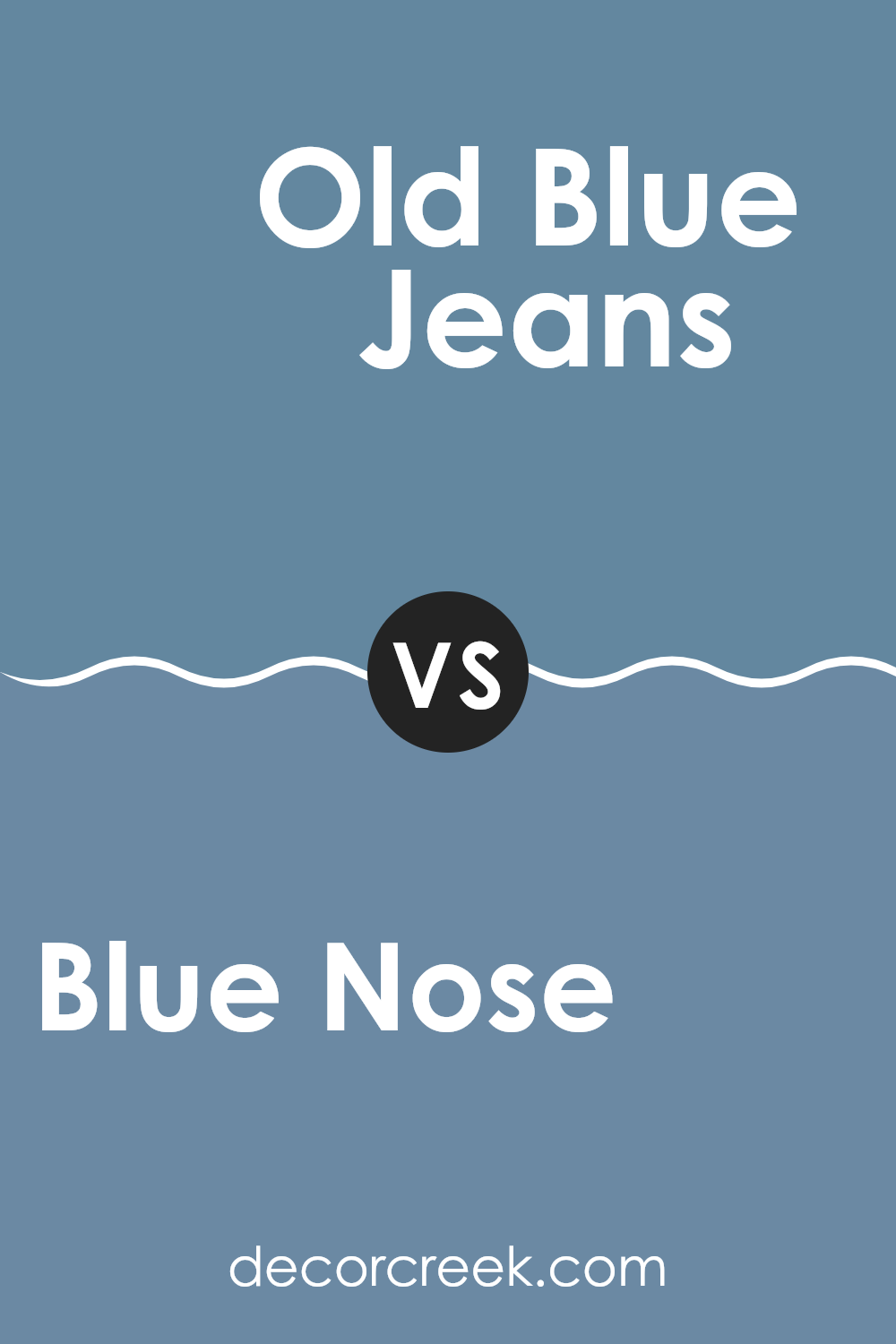
Blue Nose 1678 by Benjamin Moore vs Alfresco 1672 by Benjamin Moore
Blue Nose by Benjamin Moore is a rich shade compared to Alfresco. Blue Nose has a deeper, more saturated feel, making it ideal for creating a strong presence in an area. It could work well in places like bedrooms or living rooms where a sense of coziness is desirable.
On the other hand, Alfresco is lighter and airier. This color lends itself well to areas that aim to feel open and breezy, such as kitchens or bathrooms. While both colors are variations of blue, Alfresco will reflect more light, making the room feel more expansive.
Blue Nose, with its deeper tones, might make a room feel smaller but will add a lot of character and moodiness. Choosing between them depends on the effect you are looking to achieve in the room and how much natural light the area receives.
You can see recommended paint color below:
- 1672 Alfresco
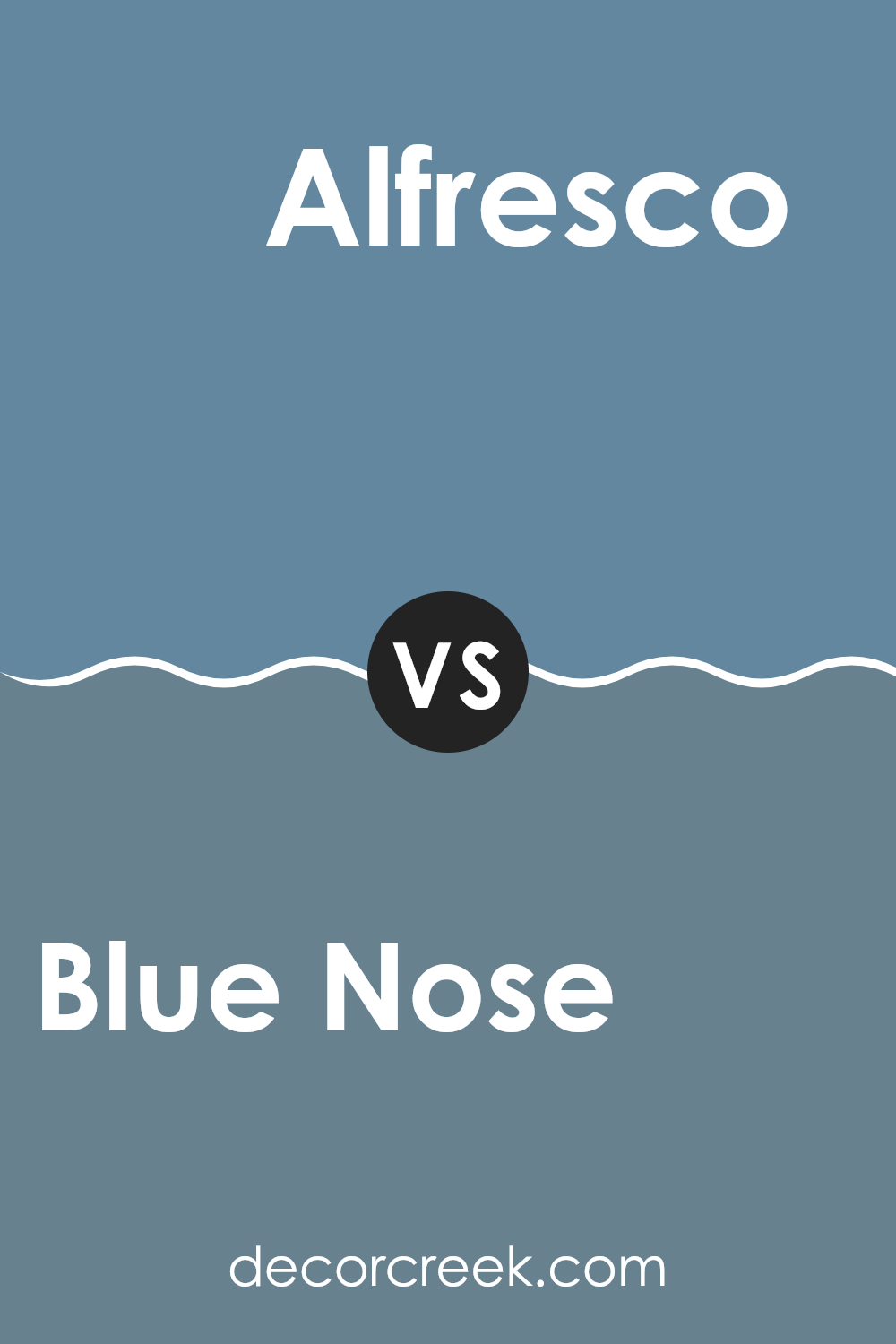
Blue Nose 1678 by Benjamin Moore vs Lakeside Cabin 1658 by Benjamin Moore
Blue Nose 1678 and Lakeside Cabin 1658, both by Benjamin Moore, offer unique takes on blue hues that bring distinct moods to any area. Blue Nose is a deeper, more traditional blue with a hint of maritime freshness, making it perfect for creating a strong, reliable ambiance.
It’s great for a study or office where focus and stability are key. On the other hand, Lakeside Cabin is lighter and leans slightly towards a teal, evoking the soothing and relaxed atmosphere of a lake retreat.
This color is ideal for areas meant for rest and relaxation, such as bedrooms or bathrooms. Although both colors share a blue base, Blue Nose presents a more conventional blue, while Lakeside Cabin offers a touch of green, giving it a more relaxed vibe perfect for more casual or soothing areas. Each color suits different types of rooms depending on the desired mood and function.
You can see recommended paint color below:
- 1658 Lakeside Cabin
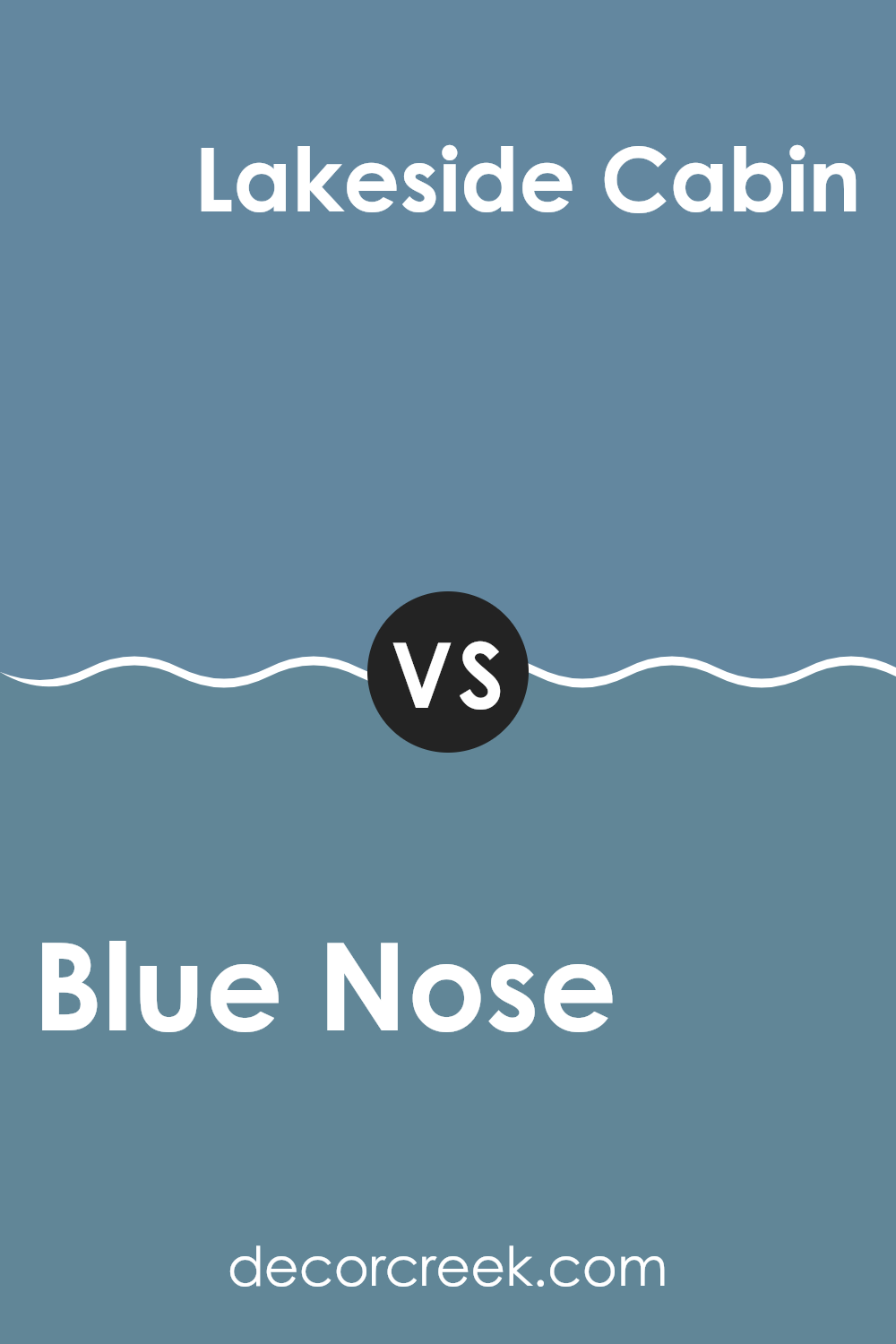
After reading about the paint color 1678 Blue Nose by Benjamin Moore, I’ve learned quite a bit! This color is really special because it has a gentle mix of blue and gray. It’s not too bright or too dark, so it feels just right to make a room cozy and welcoming. A lot of people like to use this color in bedrooms or living rooms because it gives a calm feeling, like looking at the sky on a cloudy day.
Benjamin Moore’s 1678 Blue Nose also goes well with different types of furniture and decorations. Whether you have a modern style with lots of metal and glass, or a more traditional style with wooden furniture, this color fits in perfectly. This makes it easy for someone who wants to repaint their room without buying new furniture.
For anyone thinking about changing up a room or just painting a wall, 1678 Blue Nose could be a perfect choice. It’s soft and friendly, and it helps make any room feel more like home.
So if you’re looking for a new paint color, this could be a great option to consider!
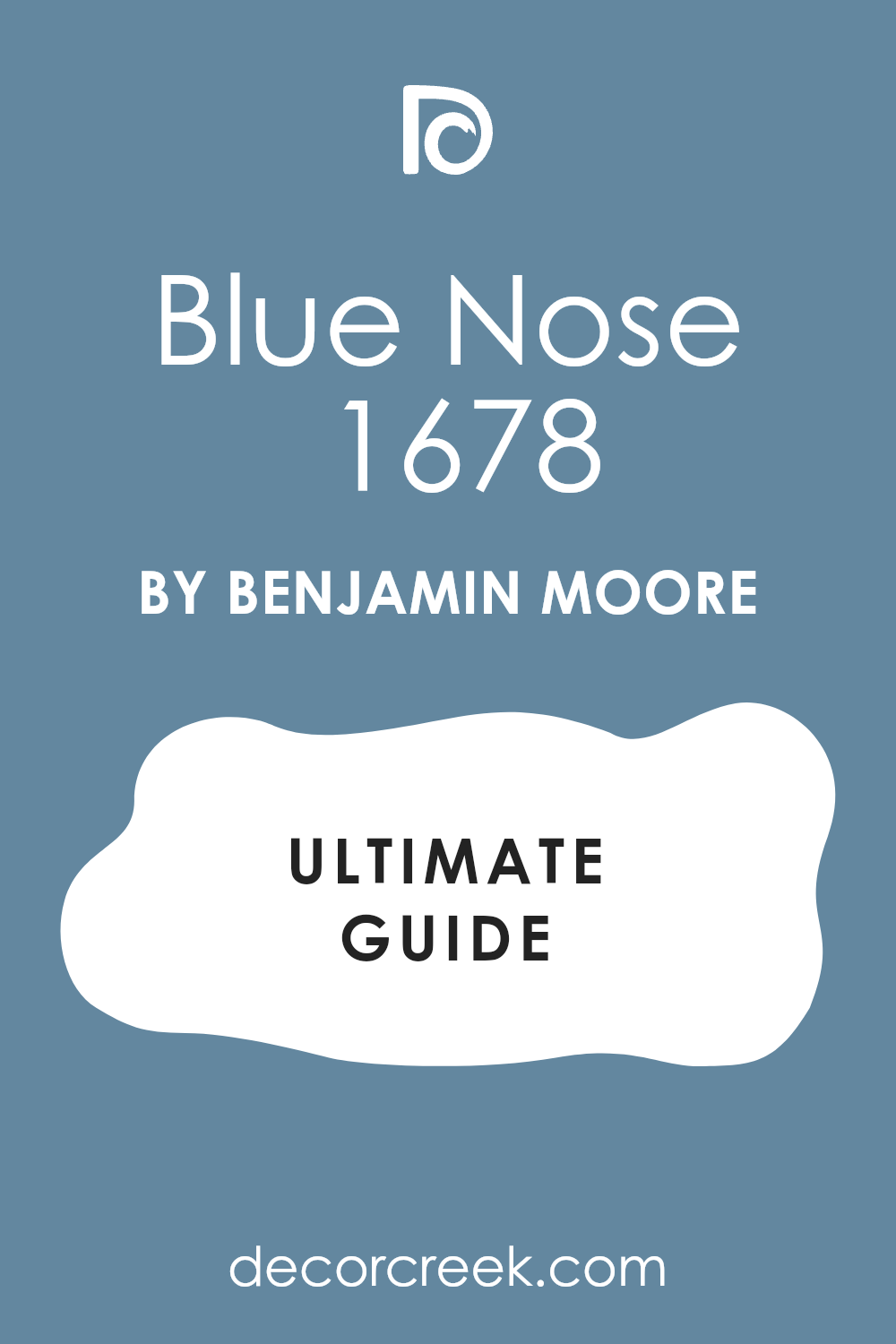
Ever wished paint sampling was as easy as sticking a sticker? Guess what? Now it is! Discover Samplize's unique Peel & Stick samples.
Get paint samples



